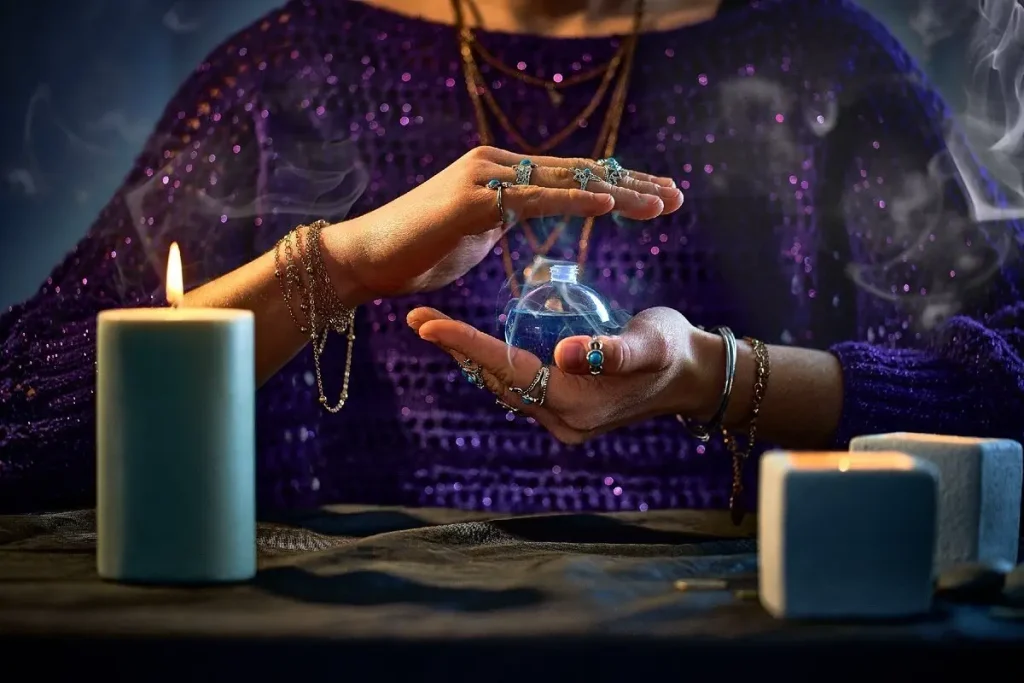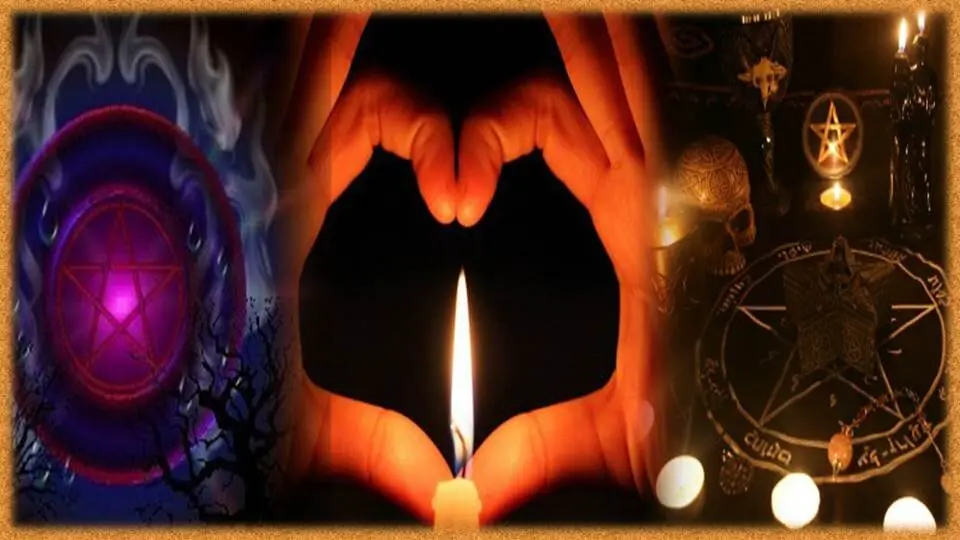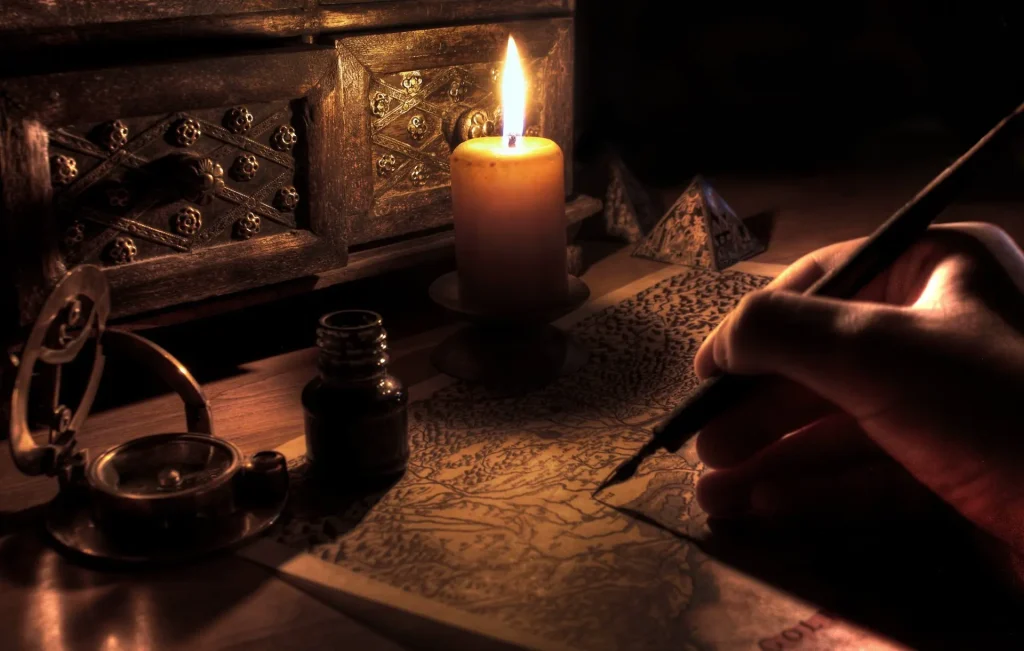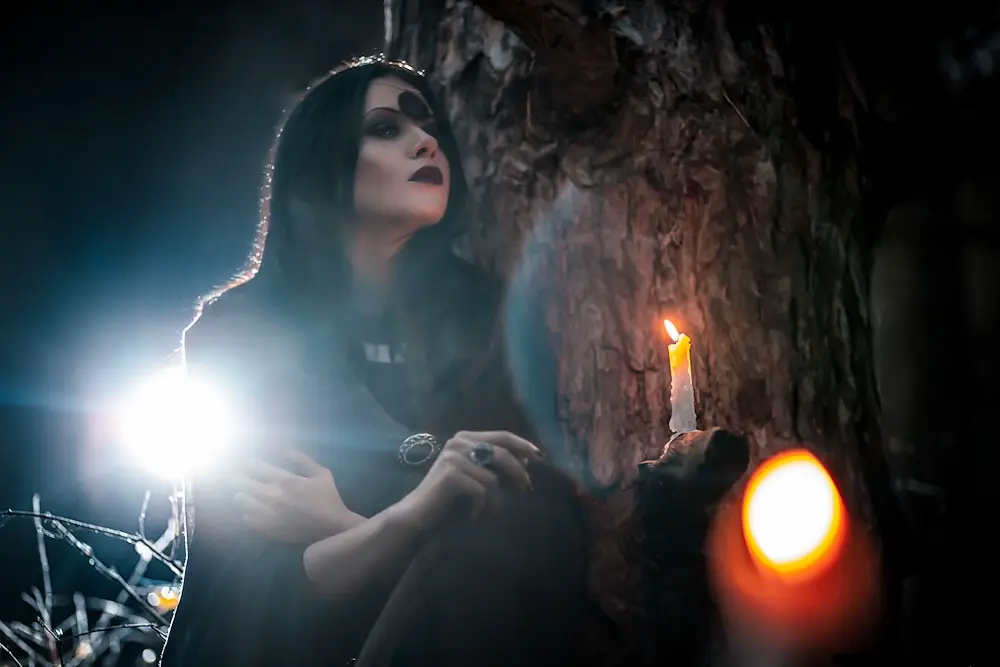Witchcraft is a broad and diverse practice that encompasses a range of spiritual, magical, and occult traditions. It has been practiced in various forms across cultures and time periods. in this article in Witch Symbols Discover step-by-step instructions, tips, and techniques to delve into this ancient practice. Unlock your inner powers and explore the world of spells, rituals, and divination methods in a safe and respectful manner. Embrace the wonders of witchcraft as you navigate through its fascinating history and gain insights into harnessing natural energies for personal growth and spiritual exploration.
The Basics of Witchcraft
Witchcraft, an ancient practice that has evolved over centuries, is gaining popularity in modern times as more individuals seek to explore their spiritual and magical potentials. Understanding the basics of wipotentials essential for those embarking on this mystical journey. By delving into the fundamentals, practitioners can gain a comprehensive understanding of how to do witchcraft and cultivate a strong foundation for their practice.
Certainly, here are the basics of witchcraft:
- Understanding Witchcraft:
- Witchcraft is a spiritual and magical practice that involves harnessing natural and supernatural energies to create change or transformation. It is often associated with nature, folklore, and the use of symbolism in rituals and spells.
- Witchcraft Traditions:
- Witchcraft encompasses various traditions and paths, each with its own beliefs and practices. Some well-known traditions include Wicca, traditional witchcraft, hedge witchcraft, and eclectic witchcraft. It’s essential to explore these traditions to find one that resonates with you or to create your own unique path.
- Magical Tools:
- Many witches use specific tools and items in their practice, such as athames, wands, cauldrons, crystals, wiccan herbs, candles, and tarot cards. These tools have symbolic and practical significance and are used to channel energy and intention in rituals and spells.
- Rituals and Spells:
- Rituals are a fundamental aspect of witchcraft. They involve a series of symbolic actions and incantations to connect with the spiritual realm and achieve a specific goal. Spells are a form of ritual that uses words, intention, and often, correspondences (like witch herbs or crystals) to bring about change or manifest desires.
- Connection with Nature:
- Witchcraft emphasizes a strong connection with nature and the natural world. Practitioners often observe the cycles of the moon and the seasons and may incorporate herbalism, gardening, and eco-friendly practices into their craft.
- Meditation and Visualization:
- Meditation and visualization are essential skills in witchcraft. They help practitioners focus their intent, raise energy, and connect with the spiritual realm. Regular practice can enhance your magical abilities.
- Ethical Considerations:
- Witchcraft often adheres to ethical guidelines, such as the Wiccan Rede, which promotes “An’ it harm none, do what ye will.” Practitioners are encouraged to act with kindness, respect, and responsibility, and to consider the consequences of their magical actions.
- The Importance of Intent:
- Intent is a crucial element in witchcraft. The strength of your desire and intention plays a significant role in the effectiveness of your magical work. Clear, focused intent is key to achieving your goals.
- Grimoire or Book of Shadows:
- Community and Learning:
- Seek guidance and support from experienced practitioners or join local or online communities of witches. Learning from others can help you expand your knowledge and skills.


The fundamentals of witchcraft encompass a range of knowledge and skills. It involves learning about the different traditions, beliefs, and rituals that form the backbone of this diverse and eclectic practice. From understanding the principles of spellcasting and working with energy to exploring the use of tools and symbols, the basics of witchcraft provide a roadmap for practitioners to navigate their magical path. By grounding themselves in these fundamentals, aspiring witches can empower themselves with the knowledge and techniques necessary to harness their inner power and connect with the energies of the universe.
How To do Witchcraft
Certainly! Let me provide a more detailed explanation of each of the steps involved in starting a witchcraft practice:
- Self-Reflection and Intention:
- Before diving into witchcraft, take the time to reflect on why you want to practice it. What are your intentions, goals, and motivations? Be clear about what you hope to achieve through your witchcraft practice, whether it’s personal growth, healing, or spiritual connection.
- Study and Research:
- Start by studying and researching the various aspects of witchcraft. This includes learning about different traditions, historical perspectives, and the core principles of magic and spirituality. Reading witchcraft books, articles, and online resources can provide valuable insights.
- Choose Your Path:
- Witchcraft is not a one-size-fits-all practice. There are various paths and traditions within witchcraft, such as Wicca, traditional witchcraft, or eclectic witchcraft. Explore these paths to see which one resonates with your beliefs and values, or feel free to create your own unique path.
- Set Up Your Sacred Space:
- Create a sacred space or altar where you can perform your rituals, spells, and meditations. Customize this space with items that hold personal significance, such as magic candles, crystals, herbs for witchcraft, witch symbols, or religious icons. This space should reflect your spirituality and intentions.
- Learn and Practice Rituals:
- Rituals are a fundamental aspect of witchcraft. They can vary widely, from simple daily routines to elaborate ceremonies. Learn different rituals and practice them regularly to develop your skills and deepen your connection to the spiritual realm.
- Work with Tools:
- Many witches use specific tools in their practice, such as athames (ritual knives), wands, cauldrons, crystals, and tarot cards. Learn how to use these tools effectively, understanding their symbolic and practical significance in your craft.
- Connect with Nature:
- Witchcraft often emphasizes a strong connection with nature. Spend time in natural settings, study herbalism, and become attuned to the cycles of the moon, the seasons, and the elements (earth, air, fire, water). Nature is a powerful teacher and source of inspiration.
- Meditation and Visualization:
- Develop your meditation and visualization skills. These techniques are essential for focusing your intention, raising energy, and connecting with the spiritual realm. Regular practice will enhance your ability to work magic effectively.
- Spellcasting:
- Spellcasting involves using words, intentions, and rituals to manifest your desires. Learn about different types of spells, including protection spells, healing spells, and divination spells. Always remember to follow ethical guidelines and consider the consequences of your actions when casting spells.
- Practice Ethics:
- In witchcraft, ethical considerations are crucial. The Wiccan Rede, for example, emphasizes “An’ it harm none, do what ye will,” promoting a non-harmful approach to magic and life. Always act with respect, kindness, and consideration for others and the environment in your practice.
These steps provide a framework for starting your journey into witchcraft. Remember that witchcraft is a personal and evolving practice, so be open to learning, adapting, and growing as you explore your unique path within the craft. Additionally, consider seeking guidance from experienced practitioners and keeping a journal to document your experiences and insights along the way.
Connecting with Nature
One of the fundamental aspects of witchcraft is connecting with nature and embracing the elemental forces that surround us. Nature is a powerful source of energy and magic, and harnessing these forces can enhance your witchcraft practice. But how do you do witchcraft and connect with nature? It starts with developing a deep reverence for the natural world, taking the time to observe and appreciate its beauty, and recognizing the interconnectedness of all living beings.
To connect with nature in your witchcraft practice, spend time outdoors and immerse yourself in the elements. Seek out places where you can feel the earth beneath your feet, breathe in the fresh air, and listen to the sounds of nature. Pay attention to the cycles of the moon, the changing seasons, and the ebb and flow of tides. By doing so, you can attune yourself to the rhythms of the natural world and tap into the elemental forces that are integral to witchcraft. Whether it is through meditation, ritual, or spellcasting, embracing the power of nature can deepen your connection to both the earth and your own magic.
Creating a Sacred Space for Witchcraft Practice
Building your altar is a crucial step in creating a sacred space for your witchcraft practice. This is where you will connect with the spiritual energies and elements, channeling them into your rituals and spells. But how do you become a witch and build an altar that truly reflects your intentions?
First, take some time to research and explore different traditions and types of witchcraft. This will help you understand the different elements, symbols, and deities that resonate with you personally. Once you have an idea of the direction you want to take, gather the necessary tools and materials. This can include items such as candles, crystals, herbs, and even personal mementos that hold special meaning to you. Arrange these items on your altar in a way that feels both visually pleasing and energetically powerful. Remember, there is no right or wrong way to build your altar; it should be a reflection of your own unique spiritual path.


Spells, Rituals, and Magic Circles
When delving into the world of witchcraft, understanding how to harness and direct energy becomes an essential skill. Spells, rituals, and magic circles are powerful tools that can help witches tap into their inner power and manifest their intentions. But how do you become a witch who can effectively harness energy through these practices?
To begin, it’s important to remember that becoming a witch is a personal journey unique to each individual. There is no one-size-fits-all approach, and the path may vary based on cultural, spiritual, and personal beliefs. However, there are some universal steps that can guide you on your path. Firstly, it is essential to educate yourself by studying and reading about different witchcraft traditions and practices. This knowledge will provide a foundation from which you can develop your own spiritual practice. Additionally, connecting with experienced practitioners and joining a witchcraft community can offer support and guidance as you navigate your path. Embarking on this journey with an open mind and a willingness to learn will help you harness energy and explore spells, rituals, and magic circles more effectively.
Tarot, Runes, and Other Methods of Witchcraft
Divination has long been an integral part of witchcraft practices, allowing individuals to connect with higher realms and gain insights into the past, present, and future. Tarot cards, with their intricate symbolism and archetypal images, have become a popular divination tool among witches and those seeking guidance in their personal journeys. By learning to interpret the cards and tap into their wisdom, practitioners can gain valuable insights into various aspects of their lives. Whether it’s deciphering the meanings of different cards, exploring various spreads, or delving into the realms of numerology and astrology connected to tarot, the possibilities for self-discovery and spiritual growth are endless.
Another method of divination that witches often explore is the use of runes. Ancient symbols carved onto small, smooth stones, runes, offer a window into the wisdom of the Norse gods and goddesses. Each rune carries its own unique meaning and essence, allowing witches to glimpse into the threads of fate and gain guidance in their decision-making processes. By casting runes and interpreting the patterns that unfold, practitioners can uncover hidden truths, receive clarity on their path, and advance in their journey of self-understanding. Interested individuals often wonder, “How can I become a witch proficient in divination?” The answer lies in dedicating time to study and practice, allowing intuitive connections to develop, and guiding one’s spiritual journey towards a deeper understanding of the magical arts.
Working with Herbs and Crystals
Before diving into the world of witchcraft, many practitioners often wonder how to incorporate natural remedies into their practice. One of the most common methods is working with herbs and crystals, which have long been associated with magical properties.
When it comes to herbs, witches often gather various plants and use them for their healing and magical properties. Different herbs are believed to possess specific energies that can be harnessed for various purposes. For example, lavender is known for its calming properties, making it a popular choice for spellwork related to relaxation or sleep. Similarly, rosemary is often associated with protection and purification, making it a staple in many rituals and spells. By understanding the unique properties of each herb, practitioners can effectively incorporate these natural remedies into their witchcraft practice.
As for crystals, they are believed to be energy receivers and transmitters, making them valuable tools for witches. Crystals come in various forms and colors, each associated with different energies and properties. For instance, clear quartz is often regarded as the “master healer” and can amplify the intentions and energies in spellwork. Amethyst, on the other hand, is known for its spiritual properties and is often used for meditation and connecting with higher energies. By incorporating crystals into their witchcraft practice, practitioners are able to enhance their spells, rituals, and divination work.
Honoring and Invoking Divine Energies in Witchcraft
When it comes to connecting with deities in the practice of witchcraft, many individuals may wonder, “How can I be a witch and honor and invoke divine energies?” The answer to this question varies for each practitioner, as the ways in which one connects with deities are deeply personal and unique. Some may choose to work with specific deities from various pantheons, while others may feel a strong connection to a particular goddess or god. It is important to approach deity work with a sense of respect and reverence, taking the time to research and learn about the deities you wish to connect with. By establishing a relationship with these divine energies, witches can tap into their wisdom and guidance, enhancing their practice and spiritual journey.
In witchcraft, there are different methods that can be employed to honor and invoke deities. One common practice is creating an altar dedicated to a specific deity or a group of deities, adorned with symbols, statues, or representations that resonate with their energy. Through offerings, such as candles, incense, or food, witches can show their reverence and gratitude to the deities they are honoring. Additionally, rituals and ceremonies can be performed to invite and invoke the presence of the chosen deity, providing a sacred space for communion and communication. Whether through meditation, prayer, or specific rituals, connecting with deities allows witches to establish a deep spiritual bond that can bring guidance, protection, and empowerment to their witchcraft practice.
Types of Witchcraft
Witchcraft is a vast and diverse realm, and there are numerous paths one can take when exploring the different types of witchcraft. Wicca, a modern pagan religion, is one of the most well-known and widely practiced forms of witchcraft. Wiccans follow a code of ethics known as the Wiccan Rede, which emphasizes the importance of harming none and taking responsibility for one’s actions. Wiccans often worship a goddess and a god, and their rituals involve the use of tools such as a wand, athame (ritual knife), chalice, and pentacle.
In addition to Wicca, there are also traditional forms of witchcraft that have been passed down through generations. These traditions vary in practices, beliefs, and cultural influences. For those who prefer a more personalized approach, eclectic witchcraft allows individuals to blend various elements and methods from different traditions to suit their own preferences and needs. Whether you choose a specific path, embrace an eclectic approach, or are still figuring out how do i become a witch, exploring the different types of witchcraft can be an exciting and fulfilling journey of self-discovery and spiritual growth.
Here is a list of types of witchcraft without additional details:
- Wicca
- Traditional Witchcraft
- Eclectic Witchcraft
- Hedge Witchcraft
- Kitchen Witchcraft
- Green Witchcraft
- Ceremonial Witchcraft
- Solitary Witchcraft
- Hereditary Witchcraft
- Dianic Witchcraft
- Druidic Witchcraft
- Stregheria (Italian Witchcraft)
- Norse Heathenry (Heathen Witchcraft)
- Feri Tradition
- Celtic Witchcraft
- Hoodoo
- Brujería
- Vodou (Voodoo)
- Santeria
- Shamanic Witchcraft


The Wiccan Rede and the Threefold Law
As a practitioner of witchcraft, understanding the ethics and responsibility associated with this path is essential. One of the foundational principles in Wicca is the Wiccan Rede, which states, “An’ it harm none, do what ye will.” Essentially, this means that, as a witch, you are encouraged to act in ways that do not cause harm to yourself or others. This principle guides your actions and decisions, helping you maintain a mindset of compassion and mindfulness in all aspects of your practice.
Another important concept to understand is the Threefold Law, which posits that whatever energy or actions you send out into the universe will be returned to you threefold. This serves as a reminder that practicing witchcraft comes with a great deal of responsibility. It encourages you to always consider the consequences of your actions and work towards positive and harmonious outcomes. By embracing these principles, you can navigate your journey as a witch with a strong sense of ethics and an awareness of the impact your words and actions can have on others and yourself.
Read More: Witchcraft in the Bible: Definition and Facts
Joining a Witchcraft Community
Joining a witchcraft community can be an integral part of your spiritual journey as a witch. Whether you are just starting out or have been practicing for some time, being part of a community can provide you with the support, guidance, and resources you need to deepen your understanding and refine your craft. So, how do you go about finding the right community for you?
First and foremost, it’s essential to define what you are looking for in a witchcraft community. Consider your own spiritual beliefs, interests, and goals. Are you drawn to a specific tradition, such as Wicca or traditional witchcraft? Are you looking for a group that focuses on a particular deity or practice? By identifying what you are seeking, you can narrow down your search and find a community that aligns with your personal journey. Additionally, reaching out to local metaphysical shops or pagan events in your area can be a great way to connect with like-minded individuals and discover local groups or gatherings. Remember, finding a witchcraft community in which you feel comfortable and supported is essential to enhancing your practice and fostering personal growth.
Final Thoughts
Witchcraft is a highly personal and evolving practice. While there are common elements and traditions, each practitioner’s path is unique. Witchcraft can serve as a means of personal empowerment, spiritual exploration, and personal growth. It is important to approach your practice with respect, responsibility, and ethical considerations and to be open to learning and growing in your craft.


Pingback: How To Do Witchcraft: Full Guide | Witchcraft |...